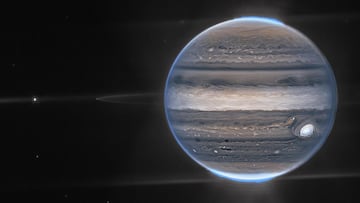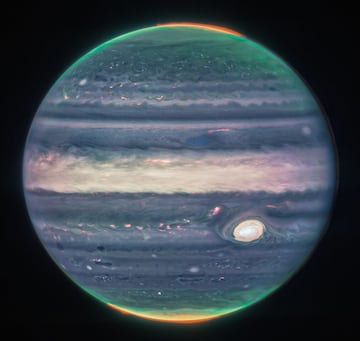NASA releases James Webb telescope images showing incredible detail of Jupiter
NASA’s $10 billion space telescope has sent back high-quality images showing incredible detail of the planet, including its famous Great Red Spot.

NASA’s space telescopes are continuing to provide us with never-before-seen images of our galaxy. The James Webb Space Telescope (JWST), which was launched last year to replace the Hubble, has already sent back incredible images of the furthest reaches of our galaxy and has now delivered two new photographs of the solar system’s gas giant, Jupiter, in which the planet’s Great Red Spot can be seen in super-high definition, as well as auroras at the poles.
“We hadn’t really expected it to be this good, to be honest”
NASA issued a statement celebrating the high quality of the photographs taken by James Webb. Imke de Pater, planetary astronomer and professor emerita of the University of California, Berkeley who co-led the observations, admitted: “We hadn’t really expected it to be this good, to be honest.” The new images show Jupiter’s auroras extending at high altitudes over the planet’s north and south poles.
Both images were taken by James Webb’s Near Infrared Camera (NIRCam), which has three infrared filters. As infrared light is invisible to the human eye, it was later mapped to the visible spectrum. The redder colors represent longer wavelengths, while the shorter ones are represented in blue. “It’s really remarkable that we can see details on Jupiter together with its rings, tiny satellites, and even galaxies in one image”, said De Pater.

Jupiter's Great Red Spot
In the images captured by the NASA telescope, the Great Red Spot can be seen in staggering detail. The phenomenon is a massive sand storm that, according to the space agency, is so large that it “could swallow the Earth”. In these images its hue has changed to a whiter color because it was reflecting a larger amount of sunlight than usual at the moment of being photographed. “The brightness here indicates high altitude - so the Great Red Spot has high-altitude hazes, as does the equatorial region,” said Heidi Hammel, Webb interdisciplinary scientist for solar system observations and vice president for science at AURA.
The images also reveal Jupiter’s rings, “a million times fainter than the planet,” according to the NASA statement, as well as two small moons known as Amalthea and Adrasthea. “This one image sums up the science of our Jupiter system program, which studies the dynamics and chemistry of Jupiter itself, its rings, and its satellite system”, said Professor Thierry Fouchet, of the Paris Observatory and co-leader of the observations.






